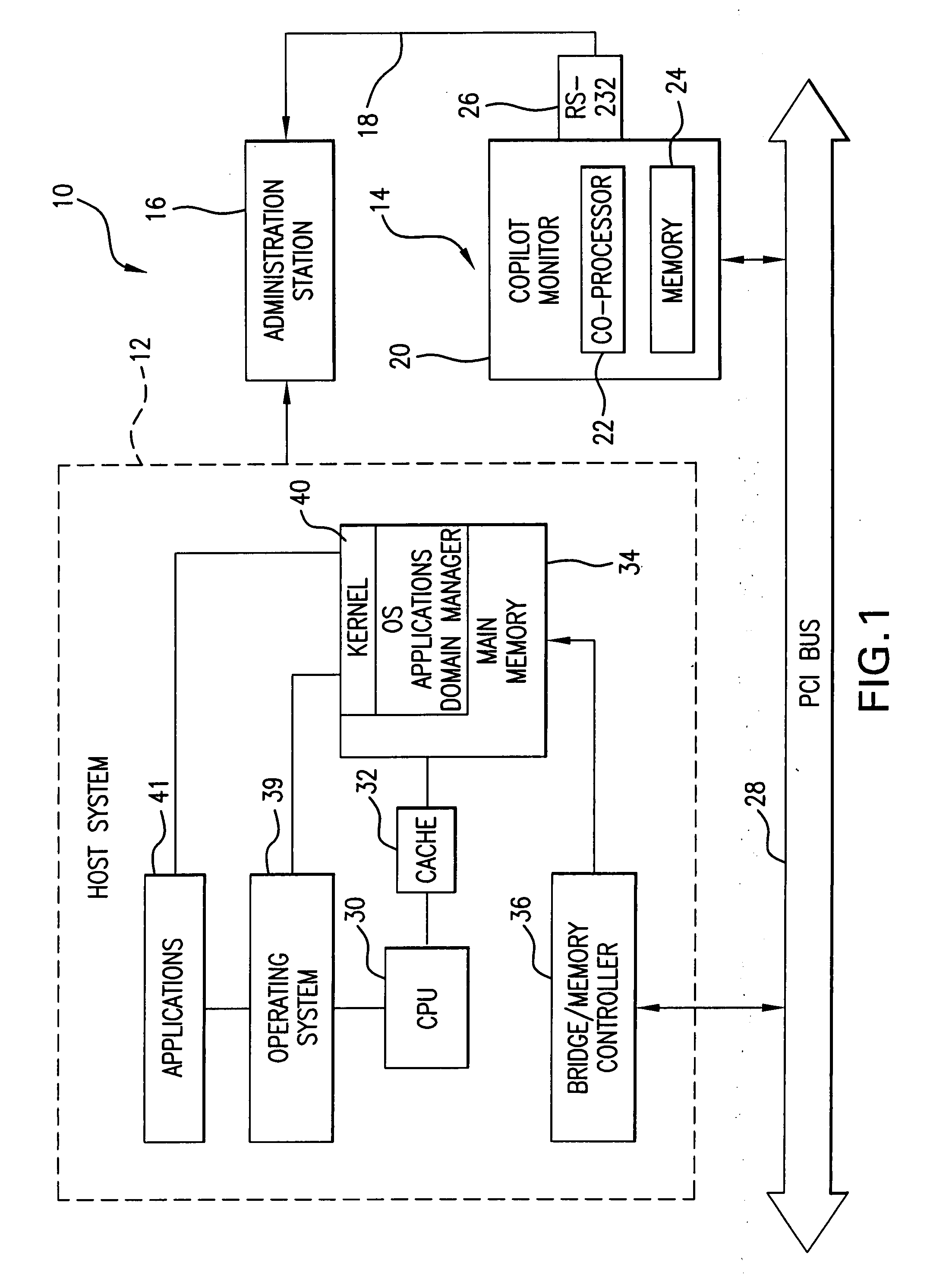Method and system for monitoring system memory integrity
a technology of system memory and integrity, applied in the field of computer security, can solve problems such as the failure to place assurance on the numerous and complex parts of the system, the failure to meet the requirements of system integrity,
- Summary
- Abstract
- Description
- Claims
- Application Information
AI Technical Summary
Benefits of technology
Problems solved by technology
Method used
Image
Examples
Embodiment Construction
[0079]The monitoring system 10 shown in FIG. 1, monitors the integrity of the host memory and host system's utilities in the memory, such as operating systems, applications, domain manager, etc. For examplary purposes and without limiting the scope of the novel concept of the present invention, the following description is made with the reference to monitoring the kernel of the host's operating system. However, it will be readily apparent to those skilled in the art that other host's systems utilities and resources, as well as bus devices, may be effectively monitored, as taught in the present patent application.
[0080]Referring now to FIG. 1, the host memory integrity monitoring system 10 includes a host system 12 to be monitored, a host memory integrity monitor 14, and an administrative system 16. The host system 12, is the mechanism that the monitor 14 of the present invention monitors for the presence of rootkits or other modifications. The host system 12 may be a desktop PC conf...
PUM
 Login to View More
Login to View More Abstract
Description
Claims
Application Information
 Login to View More
Login to View More - R&D
- Intellectual Property
- Life Sciences
- Materials
- Tech Scout
- Unparalleled Data Quality
- Higher Quality Content
- 60% Fewer Hallucinations
Browse by: Latest US Patents, China's latest patents, Technical Efficacy Thesaurus, Application Domain, Technology Topic, Popular Technical Reports.
© 2025 PatSnap. All rights reserved.Legal|Privacy policy|Modern Slavery Act Transparency Statement|Sitemap|About US| Contact US: help@patsnap.com



